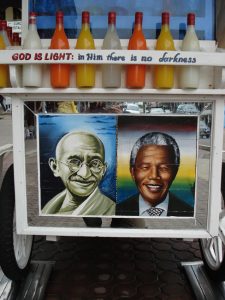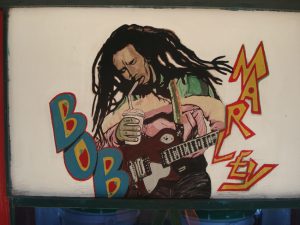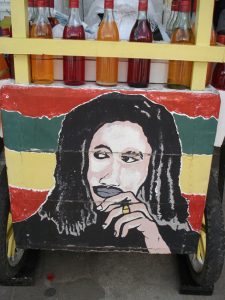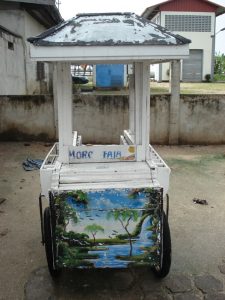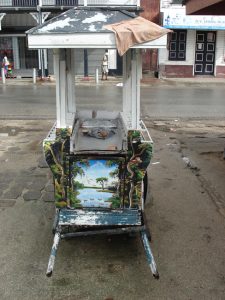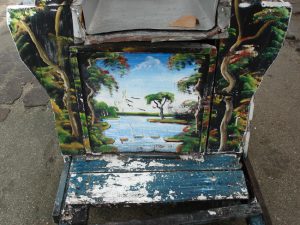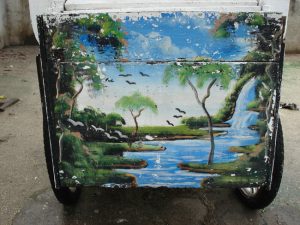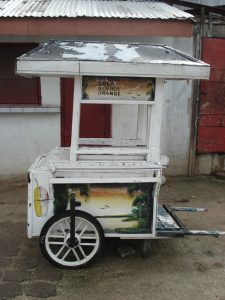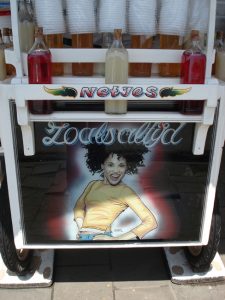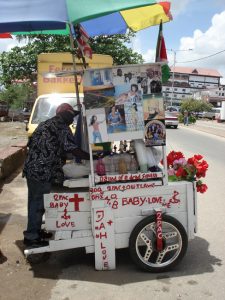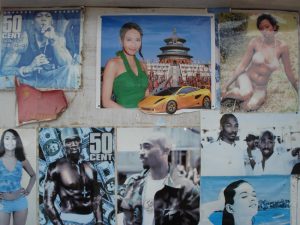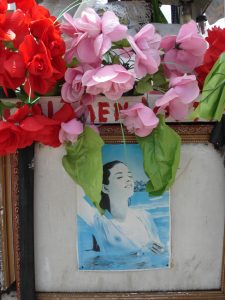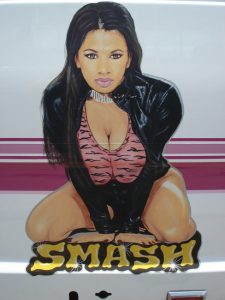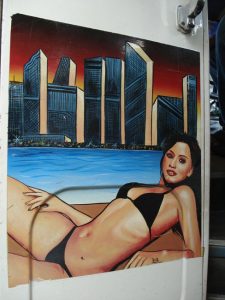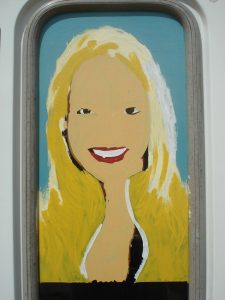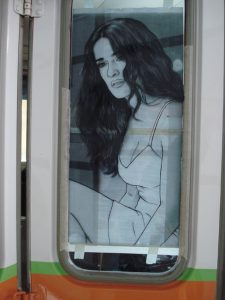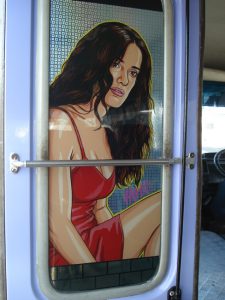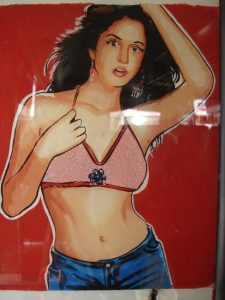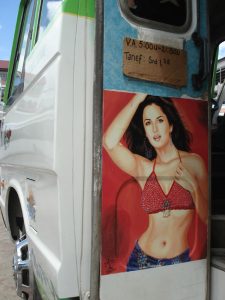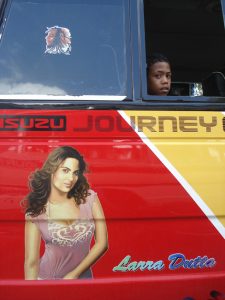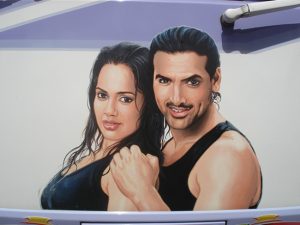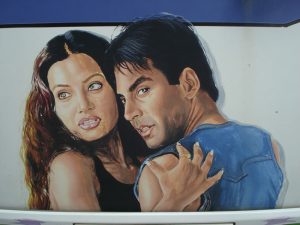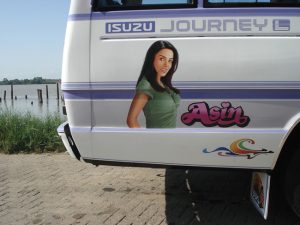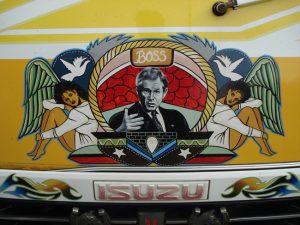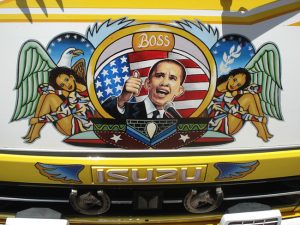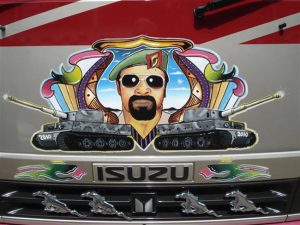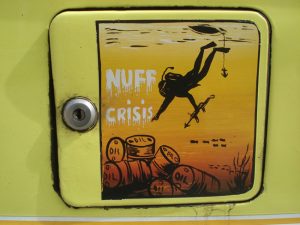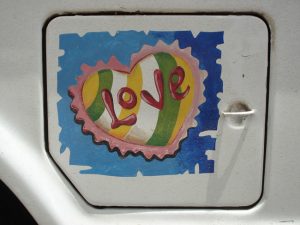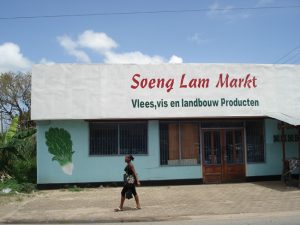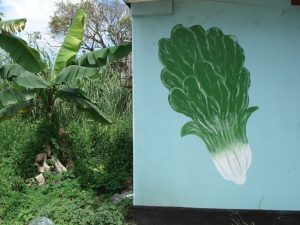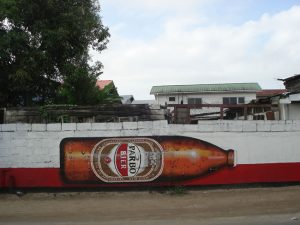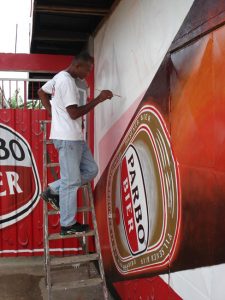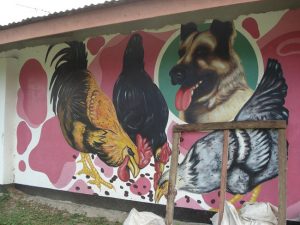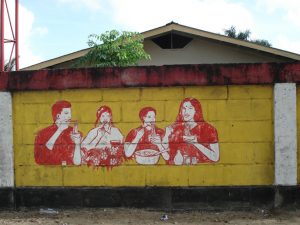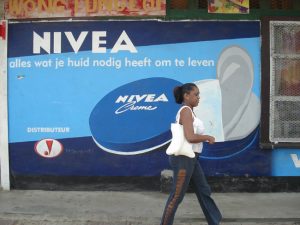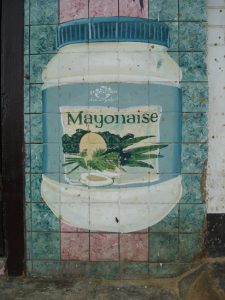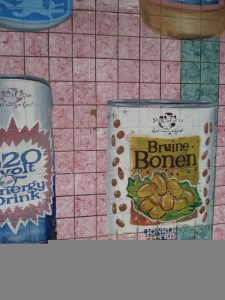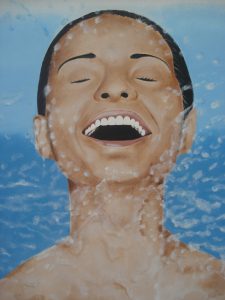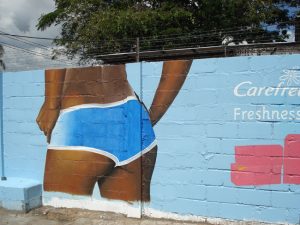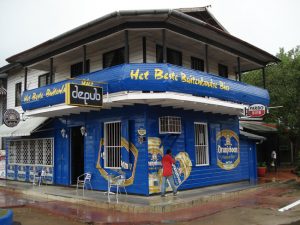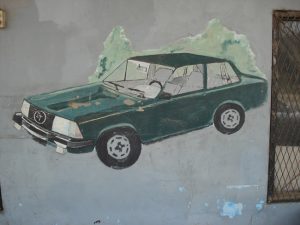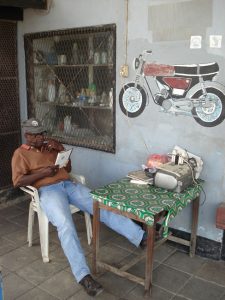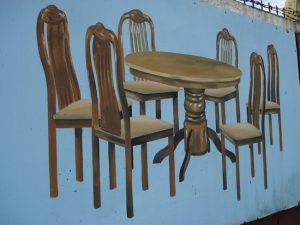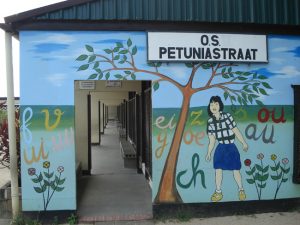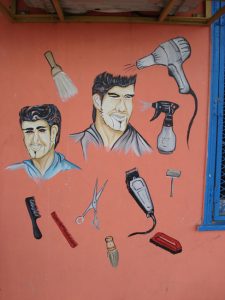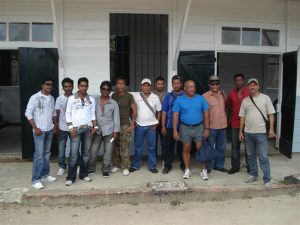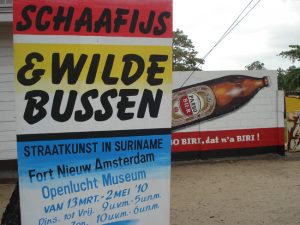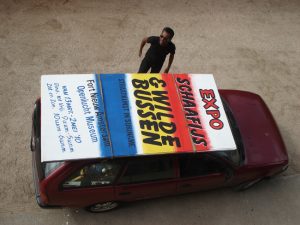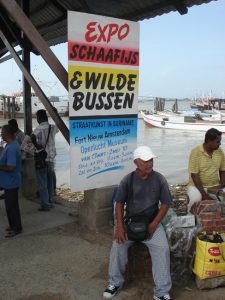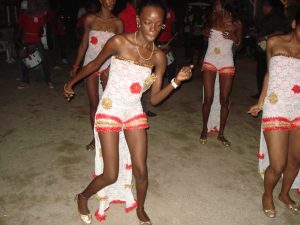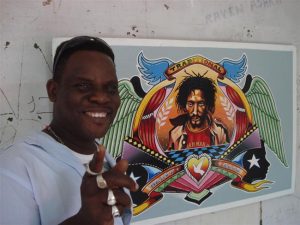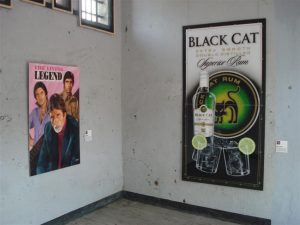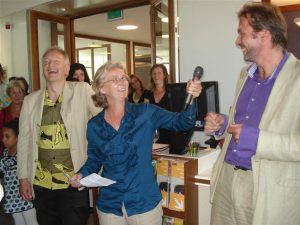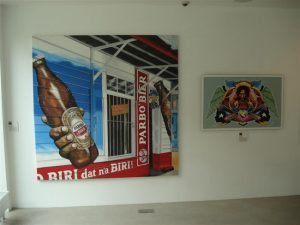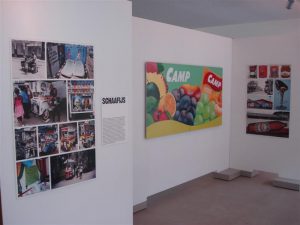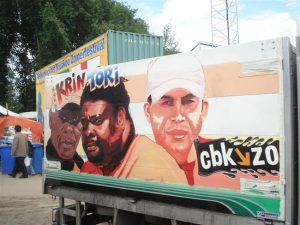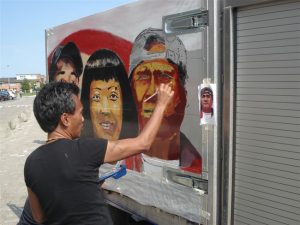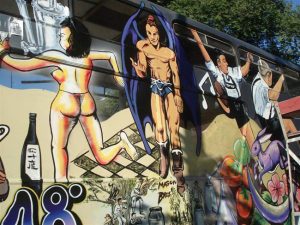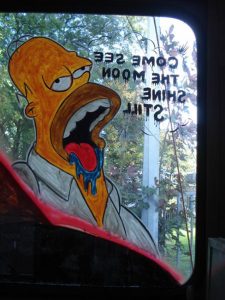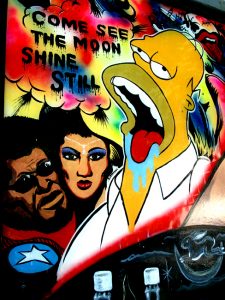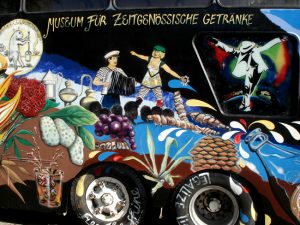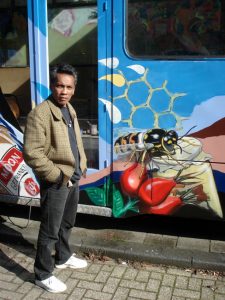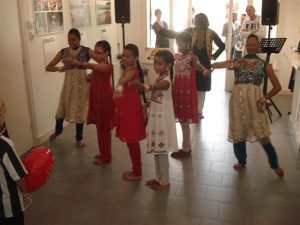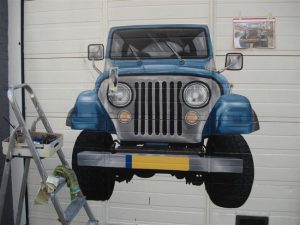Schaafijs & Wilde Bussen, straatkunst in Suriname
In 2007, as part of an exchange project between the Gerrit Rietveld Academie (Amsterdam) and the Nola Hatterman Institute (Paramaribo), I was a visiting teacher in Surinam. Apart from my teaching I had the chance to get to know the city of Paramaribo, my stay in Paramaribo eventually leading to the project Straatkunst in Suriname (Street Art in Surinam), developed in collaboration with art historian Paul Faber. Straatkunst in Suriname is made up of several elements: a book (Schaafijs & Wilde Bussen: Straatkunst in Suriname – Shave Ice and Wild Buses: Street Art in Surinam), a travelling exhibition, an artist-in-residence project and an educational programme.
While cycling in Paramaribo I was struck by the multi-coloured look of the streets. A particularly striking visual element is the ubiquitous paintings on walls, buses and shave ice carts. Street art is everywhere, but not always seen.
The paintings are so much taken for granted that few inhabitants of Surinam take much notice of them. Nonetheless they imbue the city with colour and narrative. They are mostly of a high technical level, and visually striking and compelling. The wall paintings are functional in nature. In effect they are large advertising messages cast in a form uniquely their own. Advertising is for beers, canned vegetables, telecom, electric drills, mayonnaise. The paintings on the shave ice carts and buses have a similar function. Seductively painted women and men, poetic or humorous texts and striking colours are meant to induce customers to buy ice cream or catch a bus there and then.
All three types of painting (wall, bus and shave ice cart) are accessible, very direct and supremely communicative. The images are displayed in public space and are artistic without advertising themselves as art. This kind of street art in Surinam is in effect a form of pop-art. Just as with western pop-art there are points of contact and areas of cross-fertilization between applied art and ‘fine art’. The choice of subjects is however unmistakably specifically Surinamese. In the case of the paintings on buses and shave ice carts it could even be said that they are a reflection of Surinamese society: Indian Bollywood starts rubbing shoulders with Afro-American rappers and Britney Spears type beauties.
With increasing prosperity and the rise of cheaper printing techniques and digital media the survival of such street art is threatened. It is not fanciful to think that in a few years bus will no longer be painted but covered in stickers. Painted walls will give way to digital prints on textiles. Hand-painted shave ice carts have already almost disappeared from the streets.
Street Art in Surinam and in particular the book Shave Ice and Wild Buses are thus not just a snapshot of a current phenomenon, but document a form of cultural expression that is undergoing rapid transformation and is at risk of disappearing.
With thanks to the BKVB Fund, the Mondriaan Stichting, the Dutch Embassy in Surinam, the CBK Zuidoost (Amsterdam), Fort Nieuw Amsterdam (Paramaribo), Heden, kunst van nu (Den Haag) and the CBK Rotterdam.
Schaafijs & Wilde Bussen, straatkunst in Suriname
Auteurs/authors: Tammo Schuringa, Paul Faber en Chandra van Binnendijk
Uitgever/publisher: KITpublishers
